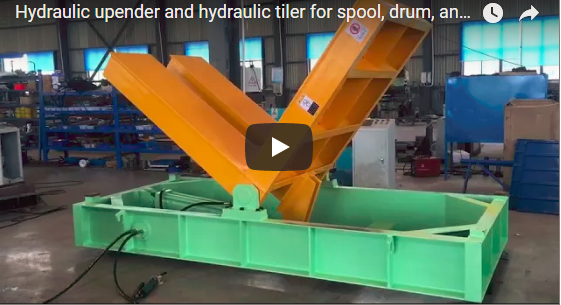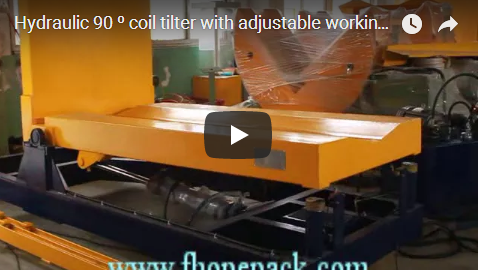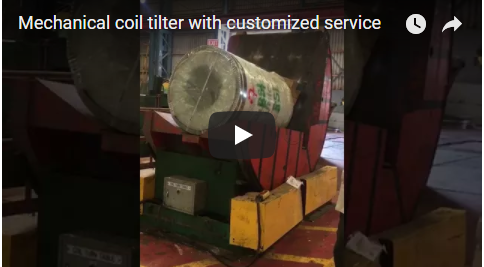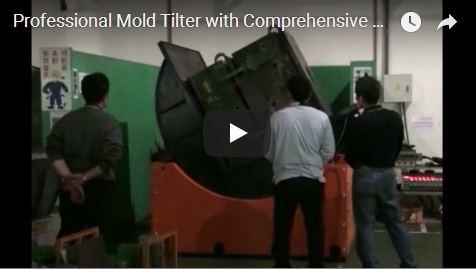Enhancing Wood Processing Efficiency: The Role of 180-Degree Wooden Bundle Inverters in Modern Operations
The global woodworking and timber processing industries face persistent challenges in optimizing material handling, enhancing operational safety, and improving throughput. Heavy, unwieldy wooden bundles require precise and safe manipulation for various processes, including treatment, drying, inspection, and stacking. Manual handling poses significant ergonomic risks and limits productivity. Addressing these challenges, the Wooden Bundle 180 Degree Inverter emerges as a critical automation solution, driving efficiency and safety in modern facilities. This article delves into the technology, operational advantages, integration considerations, and future trends surrounding these indispensable machines, drawing insights from industry analysis and engineering principles.
Understanding the Technology: Mechanics and Design Principles
Core Functionality and Application
A Wooden Bundle 180 Degree Inverter, also known as a load inverter or turning machine, is specifically engineered to securely grip and rotate large bundles of timber, lumber, or engineered wood products through a full 180 degrees. This capability is crucial for:
- Surface Treatment: Ensuring uniform application of preservatives, coatings, or finishes on all sides.
- Inspection and Grading: Allowing operators or automated vision systems to inspect all surfaces without manual repositioning.
- Stacking and Palletizing: Orienting bundles correctly for stable stacking or integration into automated packaging lines.
- Process Integration: Flipping bundles between different stages of production, such as moving from a sawing line to a drying kiln.
Key Engineering Components
The reliable and safe operation of these inverters relies on several sophisticated components, often reflecting designs outlined in material handling patents (e.g., related to clamping mechanisms and rotational control):
- Clamping System: Typically utilizes robust hydraulic or pneumatic clamps that adjust to varying bundle sizes and apply consistent pressure without damaging the wood. Pressure sensors and regulators are critical for optimal performance.
- Rotation Mechanism: Often employs heavy-duty slew rings, gear drives, or hydraulic rotary actuators powered by electric motors. Variable Frequency Drives (VFDs) may be used to control the rotation speed, allowing for smooth acceleration and deceleration, minimizing stress on the load and machine.
- Control System: Governed by Programmable Logic Controllers (PLC), enabling precise automation of the clamping and rotation sequence. Human-Machine Interfaces (HMI) provide operators with control, status monitoring, and diagnostic feedback. Integration with plant-level Manufacturing Execution Systems (MES) is increasingly common.
- Safety Features: Essential elements include perimeter guarding, light curtains, emergency stops, pressure relief valves, and load sensors to prevent operation under unsafe conditions, complying with standards like ISO 13849 (Safety of machinery).
Typical Technical Parameters
While specifications vary by manufacturer and application, typical ranges include:
- Load Capacity: 1,000 kg to 15,000 kg (2,200 lbs to 33,000 lbs) or higher for specialized applications.
- Bundle Dimensions Handling: Accommodates various lengths (e.g., 2m - 12m), widths (e.g., 0.5m - 2.5m), and heights (e.g., 0.5m - 2.5m).
- Rotation Speed: Controlled rotation typically completing a 180-degree cycle in 30 to 90 seconds, depending on load size and system design.
- Power Requirements: Primarily electric (e.g., 480V/3Ph/60Hz or 400V/3Ph/50Hz), with hydraulic power units integrated.
- Footprint: Varies significantly based on capacity and configuration, requiring dedicated floor space and often specific foundation considerations.
Operational Advantages and Demonstrable ROI
The implementation of wooden bundle inverters translates into tangible benefits that directly impact a facility's bottom line and operational health.
Enhanced Throughput and Efficiency
Automated inversion significantly reduces cycle times compared to manual methods or using less specialized equipment like forklifts with rotators. Industry reports suggest automation in material handling can increase overall throughput by 15-30% in wood processing lines by eliminating bottlenecks. The consistent and predictable cycle time of an inverter allows for better production planning and scheduling.
Improved Safety and Ergonomics
Manual handling of heavy wood bundles is a primary source of Musculoskeletal Disorders (MSDs) in the woodworking industry. OSHA and European Agency for Safety and Health at Work (EU-OSHA) highlight lifting, twisting, and awkward postures as major risk factors. Inverters eliminate this manual strain, drastically reducing the risk of injuries, associated worker compensation claims, and lost workdays. This aligns with corporate responsibility goals and enhances workforce morale.
Product Quality and Consistency
Gentle, controlled clamping and rotation minimize damage to wood bundles (e.g., scratches, broken straps, edge damage) that can occur with manual or less precise handling. Ensuring bundles are correctly oriented for subsequent processes like drying or treatment leads to more uniform product quality and reduces waste.
Cost Reduction Analysis
The Return on Investment (ROI) for wooden bundle inverters stems from several areas:
- Labor Savings: Reduced need for manual labor dedicated to bundle manipulation.
- Reduced Product Damage: Lower material waste and rework costs.
- Increased Productivity: Higher output within the same operational hours.
- Lower Injury-Related Costs: Decreased insurance premiums and compensation payouts.
- Optimized Process Flow: Reduced bottlenecks leading to better overall plant efficiency.
- While initial investment is significant, ROI periods of 18-36 months are often cited in industry case studies, depending on utilization rates and labor costs.
Integration and Implementation Considerations
Successfully deploying a wooden bundle inverter requires careful planning beyond the machine purchase itself.
System Integration Strategy
Seamless integration with upstream and downstream equipment (e.g., conveyors, strapping machines, sorting lines) is critical. This involves mechanical alignment, communication protocols between control systems (PLCs), and ensuring material flow is optimized. A thorough site assessment and integration plan developed with the equipment supplier is crucial.
Infrastructure Requirements
Facilities must ensure adequate:
- Power Supply: Sufficient electrical capacity and appropriate connections.
- Floor Space: Dedicated area accommodating the machine's footprint and required safety zones.
- Foundation: Potential need for reinforced concrete foundation to support the machine's weight and dynamic loads during rotation.
Operator Training and Skill Development
While automation reduces manual labor, it increases the need for skilled operators and maintenance personnel. Training should cover:
- Safe operation procedures.
- HMI usage and parameter adjustments.
- Basic troubleshooting.
- Preventive maintenance routines.
- Understanding PLC diagnostics (for maintenance staff).
Investment Analysis
A comprehensive analysis should compare the total cost of ownership (purchase, installation, training, maintenance, energy) against the projected savings and efficiency gains to justify the capital expenditure. Financing options and potential government incentives for automation or safety improvements should also be explored.
Current Trends and Future Innovations Shaping the Industry
The technology behind wooden bundle inverters continues to evolve, driven by broader manufacturing trends.
Advanced Automation and Robotics
Integration with Automated Guided Vehicles (AGVs) or Rail Guided Vehicles (RGVs) for automated loading and unloading of the inverter is becoming more feasible. Robotic systems could potentially handle strap removal or placement in conjunction with the inversion process, further reducing manual intervention. This aligns with Industry 4.0 principles of interconnected, autonomous systems.
Smart Features: IoT and AI Integration
Modern inverters are increasingly incorporating smart technology:
- IoT Connectivity: Enabling remote monitoring of machine status, performance metrics (cycle counts, fault logs), and energy consumption via cloud platforms.
- Predictive Maintenance: Utilizing sensor data (vibration, temperature, hydraulic pressure) and AI algorithms to predict potential component failures before they occur, minimizing unplanned downtime. Research in predictive maintenance suggests potential reductions in downtime by up to 50%.
- Data Analytics: Providing insights into operational efficiency, identifying bottlenecks, and optimizing inverter parameters based on historical performance data.
Sustainability and Energy Efficiency
Manufacturers are responding to market demands for greener operations:
- Energy-Efficient Components: Utilizing premium efficiency motors, VFDs for optimized motor control, and load-sensing hydraulic systems that reduce power consumption during idle periods.
- Hydraulic Fluid Management: Designs facilitating easier maintenance and use of biodegradable hydraulic fluids.
- Lifecycle Considerations: Designing for durability, ease of maintenance, and eventual recyclability of components.
Customization and Modular Designs
There is a growing trend towards more modular inverter designs, allowing for easier customization to specific application needs (e.g., different bundle sizes, integration requirements, specific environmental conditions). This flexibility enables broader adoption across diverse segments of the wood products industry.
Selecting the appropriate wooden bundle inverter requires a systematic approach.
Needs Assessment Checklist
Before contacting vendors, clearly define your requirements:
- Load Characteristics: Maximum weight, dimensions (L x W x H), type of wood (timber, panels, engineered wood).
- Cycle Time: Required inversion speed to meet production targets.
- Operating Environment: Indoor/outdoor, temperature extremes, presence of dust/debris.
- Integration Points: Existing conveyor heights, control system compatibility.
- Safety Standards: Compliance requirements for your region/facility.
- Budget: Available capital for purchase, installation, and training.
Vendor Selection Criteria
Evaluate potential suppliers based on:
- Proven Experience: Track record in the wood industry and with similar applications.
- Technical Capabilities: Machine robustness, control system sophistication, customization options.
- After-Sales Support: Availability of spare parts, technical support, service technicians.
- Reliability and Durability: References from existing users, warranty terms.
- Innovation: Incorporation of modern features (IoT, energy efficiency).
Conclusion: A Strategic Imperative for Modern Wood Processing
The Wooden Bundle 180 Degree Inverter is more than just a piece of material handling equipment; it is a strategic investment in operational efficiency, workplace safety, and product quality. As the woodworking industry continues to embrace automation and smart manufacturing principles, these machines play an increasingly vital role in maintaining competitiveness. By carefully evaluating needs, understanding the technology, planning for integration, and leveraging ongoing innovations, businesses can unlock significant value, transforming their material handling processes from a cost center into a competitive advantage. The adoption of advanced inverter technology is rapidly becoming an essential element for forward-thinking wood processing operations aiming for sustainable growth and operational excellence.






